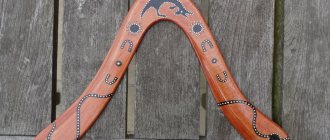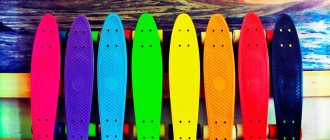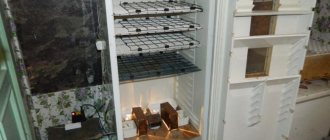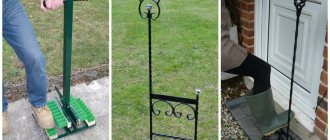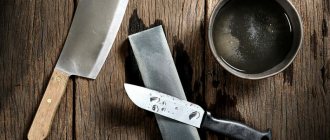Do you need to prepare skis that you just bought at the store, or “finish up” a combat pair that has served faithfully for many seasons? Do you need to change the sliding characteristics, change the paraffin, apply a new structure? There is a ski marathon ahead and you need to make a “mirror” out of a sliding surface that was pretty scratched in training kilometers so that you can fly like on wings? Do you need to select and apply the right paraffin wax? Do you need to restore the former super-speed characteristics of your favorite model?
You might be interested in visiting our service center. Here they solve the problems of turning good skis into super-fast “missiles”. Here they prepare and maintain running equipment, and here, during the season, masters bring more than 1,000 pairs of skis into working condition.
Any successful enterprise is based on qualified and experienced craftsmen who create the company’s image with the quality of their work. These people are trusted. They are visited by grateful clients. They make an appointment with them a lot of time in advance, because they know that this master will “do it right.”
Let me introduce Dmitry Kalachev, a cross-country ski master, who in the service department is responsible for making good skis even better.
Dmitry Kalachev has been professionally preparing cross-country skiing for athletes and beginners for more than 10 years, and, of course, he himself is actively involved in skiing - CCM, after all.
We asked Dmitry several questions regarding the correct attitude and proper preparation of skis.
What is your opinion about preparing your own skis?
I have a good attitude towards self-processing skis, especially if it is done by experienced skiers, but for complete and high-quality, truly professional ski preparation you need special equipment and materials. A large selection of various “chemicals”: removers, paraffins, accelerator powders, tools: brushes, cycles, special irons - all of this an “independent” amateur can afford a very small part for a very narrow range of applications. For example, amateurs certainly don’t have machines that apply structure to the sliding surface of skis. If you need to soak your skis especially heavily in paraffin, for example, before a ski marathon, we, the only ones in Moscow, have a thermal box, this is the most effective way to drink. The skis are held in the thermal box chamber at a temperature of 70 degrees for 2-4 hours, thus the paraffin penetrates deeper into the structure. It is clear that amateurs who prepare themselves cannot afford such complex technologies. And it is clear that the cost of a single ski processing will always be higher than processing in special centers.
Another important point is the “fullness” of the hand. When you prepare skis every day, when you have all the necessary equipment and consumables at hand, then the whole process is done very efficiently, because it is worked out to the point of automation. Amateurs who prepare skis from time to time will definitely spend more time on their preparation and the result will definitely differ from the work of a professional. This is why, by the way, professional skiers do not prepare their own skis, although they have enormous experience. Real, practical, everyday experience is the basis for predictable quality.
Other options for a crawler snowmobile made from a walk-behind tractor
The example considered shows a snowmobile on one wide track. This model is considered the best cross-country ability in deep snow and difficult terrain. However, there are other homemade tracked snowmobiles made from a walk-behind tractor, which are assembled with your own hands from tractor tires and other materials.
No less popular are models with two tracks, which use the same conveyor belt. The base and tracks are made from it. To do this, strips are cut and secured to the base with bolts or rivets.
If you cut the tread out of a tractor tire, the finished ring will act as a caterpillar. The chassis of a snowmobile uses wheels. They are placed on a walk-behind tractor from a passenger car. The tread from the tire is pulled onto the wheels.
What advice do you have for those who plan to prepare skis at home? What are the minimum accommodations?
For those who want to prepare skis at home, on their own, you will need a stable table to which you can screw a vice, into which a portable profile is fixed, in which the ski is fixed. Without this device it is extremely inconvenient to work.
If you have new skis in factory wax, then, first of all, remove it from the groove with a pencil, use a special scraper from the sliding surface, and clean it. Then you need to apply base paraffin - you can fuse it by pressing a paraffin block to the iron and dripping the sliding surface, or go through it with a dry paraffin block (this way the consumption is less). After this, use a hot iron to spread the molten layer of paraffin over the entire surface of the ski.
Important! The melting temperature is always indicated on paraffin; it must be set on the iron.
The process of fusing paraffin is always done from toe to heel, we carry out processing in this direction. After the paraffin has cooled, you need to remove its excess with a pencil (from the groove) and a scraper from the flat part. After this, the sliding surface must be polished - I personally do this with a circular brush with nylon. If we are preparing skis for training or competitions, when the quality of gliding is especially important to us, then we select and apply an additional layer of paraffin, depending on the condition of the snow and weather.
It’s better if you first practice preparing old skis at home, because without skill you can ruin an expensive pair, for example, burn out the sliding surface.
For those who like to prepare their own skis, we recommend the following:
- ointments and paraffins
- scrapers / scrapers
- brushes
- special tools: fiberlen, plugs, clamps, rollers, clamps, vices, irons, files, profile machines, suitcases for ointments
In addition, we have a special article about the correct choice of SWIX ointments
How to make a caterpillar attachment for a walk-behind tractor
When assembling a snowmobile with your own hands, special emphasis is placed on the caterpillar track. Let's look at the features of assembling a homemade product: how to make a caterpillar attachment to a walk-behind tractor with your own hands.
Some craftsmen install parts from a walk-behind tractor or make them with their own hands, and those who cannot manufacture them purchase a universal factory caterpillar drive. A homemade caterpillar can be made from:
- bushing roller chain and conveyor belt;
- tires;
- belts
A homemade tracked attachment to a Buran series unit is often found. For such a unit, the entire chassis together with the engine weighs 20-30 kg.
The snowmobile attachment “CAM” for the walk-behind tractor is produced only in Nizhny Novgorod. It goes on 3 rollers and is all-terrain. It can be driven both in snow and mud.
For a homemade snowmobile there is also a prefix “CAM”, only in this case you will clearly need to know the shape and parameters of the gearbox shaft.
Crawler module for walk-behind tractor. Thanks to the wide tracks, this attachment can easily move through deep snow. It fits the Neva, Oka, Tselina, Cascade, Luch walk-behind tractors, and can also be used on walk-behind cultivators with some modification of the seats. In the finished console, you can adjust the tension of the tracks, which stretch when moving.
The driven part attached to the walk-behind tractor is also of no small importance. This is the driver's seat and luggage space
In this case, you can use whatever comes to mind: a board, a stool, a sleigh, a chair, etc. The only important condition when choosing is that the seat is waterproof.
Read also: What is masonry mesh used for?
Ready-made crawler attachment for the Neva walk-behind tractor. There are universal tracked attachments on sale that are suitable for any mini-unit, including the Neva walk-behind tractor. They are easy to assemble and install. Very compact and do not take up much space when stored. The optimal width of the tracks increases the maneuverability of the device. The risk of getting stuck in snowdrifts or mud is minimized. The undoubted advantage of ready-made tracks is their long service life and affordable price.
Can you use a household iron to prepare your skis yourself?
No, of course, under no circumstances! The difference is that special ski irons very accurately maintain the set temperature on their surface, while with a “household” iron it either decreases or increases again. To prepare skis, special irons are used, with the ability to set the required temperature - no more, no less. With a household iron, you won’t be able to guess the temperature; you can easily burn out the sliding surface. This means that the damaged area will not absorb paraffin well and will not glide well.
Frame and body
Before work, it is recommended to draw up a drawing of the frame. The structure is welded from a square pipe 25 x 25 mm with a wall thickness of 2 mm. For a payload of over 150 kg, the section size is increased to 30 x 25 mm. The loading area and body elements are covered with plywood. The seats are selected with a hydrophobic coating.
In the center of the fracture frame there is a hinge that allows rotation around a vertical axis. The maximum rotation angle is limited by welding metal plates. The front half is used for steering, and the engine is placed on the rear half frame.
The solid frame is welded in the form of a rectangle, inside of which axles and tracks are located. The engine is placed in front on a special platform, rigidly welded to the rest of the frame. In both cases, the motor is installed in the transverse direction (the shaft faces the end).
How many kilometers does high-quality paraffin wax last?
On clean, fresh snow - for two or three training sessions, that is, 50-70 kilometers, then you need to wash off the remnants of the old one and apply new one. If the snow is dirty or icy, and in big cities - Moscow, for example - it is like this very often, then after each training wash, clean, and wax. If you have important competitions, especially a marathon, then on the eve of the event the skis must be cleaned of old paraffin, washed with special washes and then completely applied with new layers of new paraffin.
Kamus
The skin for skis must be peeled off from the hoof itself, making an incision along the inside of the leg. After fleshing, the skins must be pulled with force onto the boards, secured with nails. Then the camus should be dried for 1-2 weeks at room temperature, away from the stove or radiator. There is no need to additionally treat it after drying - the thinner it is, the faster it will wear out. After drying is complete, you need to select a piece of skin for each ski. The smaller its thickness, the thicker the camus should be, and vice versa.
If the skins are not large enough, you need to sew several pieces into one using coarse thick threads. Before the operation, the camus should be soaked in a bucket of water for several hours and then half dried. Skins that are too raw or too wet will stretch and tear when stitched. When sewing, you need to make holes with an awl and then thread the thread through them.
The holes should be angled so that the thread does not come out from the underside of the skin. The finished camus needs to be glued using reliable waterproof glue; the usual “Moment” is good for this. Glue must be applied to the inner surface of the skin and to the edges of the ski. To make skis more comfortable to use, they can be painted or varnished. In this case, snow will not stick to them.
How do you become a ski master? Did you study somewhere?
There are no special educational institutions that teach ski masters. There are training programs that are regularly held, very detailed, multi-day programs and seminars at manufacturers of skis, equipment, and waxes, where brand representatives discuss in detail with the masters all the issues of using tools, ski “chemistry,” machines and devices. The level of the masters who pass on their knowledge to us is the highest, this is the level of work with top athletes at the World Cups, Olympics, with the best skiers on the planet.
I got into the profession of “ski preparation master” from sports. I skied, got the first category, and always prepared my skis myself. Then a friend suggested that I cook not only for myself, but also for my comrades. In my opinion, all the masters I know also came from sports. It would be strange if a person who does not represent the real needs and requirements of skiers took up this matter.
I continue to ride, I think that the master needs this. And I like to prepare skis. And when it’s not the season for skiing, I switch to cycling. And in the summer I work as a bicycle repair and adjustment specialist.
Before joining Kant, I worked as a ski master in Bitsa. There were slightly different specifics of the work. Here the workshop is next to the store, they bring new equipment more often, and there more skiers came to the workshop, who somehow skated a new pair. We came to train, but, for example, we didn’t have time to prepare our skis, or it wasn’t possible, or we forgot – so we came to the service center.
Homemade motorized dog: technology
Before starting work, you need to prepare all the necessary tools and equipment for the motorized dog. You can learn more about the progress of the work by watching the thematic video.
Preparing for work
To avoid problems with using a motorized dog, it is important to immediately determine its main technical parameters:
- load capacity;
- engine power;
- transmission type;
- engine starting system - manual or electric.
You should also think about additional accessories for the motorized dog - a winch, lighting, protective elements, seats. Then an accurate drawing is drawn up, which will reflect all the nuances. Next, you can order a set of parts for a motorized dog or select them yourself from those available from other equipment.
Required Tools
When working, you cannot do without a welding inverter, a drill and grinder, and a set of wrenches. Also, to install the motorized dog, you will need screwdrivers, a file, and other small tools. The craftsman must have access to lathes and milling machines.
Assembling a motorized dog
First, they make the frame of the motorized dog, which will help secure the engine, gearbox, and chassis. To do this, selected pipes (a beam or channel is also suitable) are welded into a rectangular frame. Then the fastenings for all the important components of the motorized dog are welded. Afterwards you can install the engine.
Conservation. Should I do it?
I think it is necessary, especially if these are expensive, “combat” skis, the gliding quality of which you want to maintain for as long as possible. If you do not preserve your skis after the season, over the summer the sliding surface without paraffin will oxidize and dry out - therefore, it will absorb paraffin less well and work worse during the season. It’s better, of course, to take care of your inventory in the spring. If there are chips or scratches, they must be sanded using a machine and covered with universal paraffin at an average temperature of -2 - 8C.
Criterias of choice
When choosing hunting skis you need to pay attention to the following criteria:
- strength and flexibility;
- quality of material;
- lenght and width;
- fastenings that fix the leg.
Skis for hunting must be distinguished not only by durability, but also by good flexibility, so that even when passing through the most snowy places the hunter does not lose maneuverability. They must be selected in size, taking into account that the support area for 1 kg of human body weight should be at least 50 square centimeters. At the same time, their length should not be greater than the height of the hunter. Bindings for hunting skis must be selected in such a way that rigidity is ensured and the leg does not slip out or bend while riding.
Who comes to you most often? Beginners or pros?
If a person is an active athlete, trains in a team, participates in at least regional competitions, then most likely he uses the services of professional specialists who work with these teams. This is the “major league”, the amount of work, the cost of materials spent on one pair of skis are not comparable to “amateurs”. Yes, we have skiers who need especially high-quality work, but mostly ordinary skiers come to us - amateurs who often participate in mass starts, who need speed and comfort of skiing, who have decent training.
We have every opportunity to work with both those and others. Qualification, consumables, tools, machines allow you to perform any, even the most complex operation.
By the way, it is worth saying that in our work we use machines from well-known companies: Montana and Wintersteiger, these are, in fact, the best options for mechanical processing of a sliding surface. As far as I know, most of the top manufacturers use machines from these companies in their production – both for grinding and for applying “factory” sandpaper.
We can also give you professional notching on your skis - we have a database of notches for different weather and snow conditions.
But these services are most often for experts and ambitious skiers, and if you are an amateur, if you have beginner or intermediate level equipment and you go on a ski trip no more than two or three times a week, and this is just a walk - without any special competitive goals and training plan, then you just need to initially select the right equipment in the store, depending on your weight, height, and carry out the simplest, basic operations with your skis - even these will significantly improve gliding.
The correct selection of inventory is very important; there is no need to be shy about sales consultants. If the skier is heavy, the ski will not spring back. On the contrary, it’s also bad if the skis are hard and the skier doesn’t have enough weight, he won’t push through it, there will be no glide.
Kant has a fairly large assortment and professional consultants - contact them, they will help you choose a set of equipment for any task and purpose.
If you set yourself serious sporting goals - to run the same ski marathon, then feel free to contact us - we will prepare skis, depending on your goals.
Our store consultants and useful articles will help you choose the right cross-country ski equipment, clothes and shoes:
- Review of the SWIX 2022 / 22 collection. Ointments and tools
- Clothes for cross-country skiing. New products and bestsellers from Bjorn Daehlie, Nordski, Loeffler
- Alpina Ski Boot Review: Anatomy of Innovation
- Salomon ski collection 2021/22
- A guide to headlamp technology. Ten top flashlights for competitions and training
- Review of KV+ ski poles
- Karhu – Finnish ski know-how
- The right choice of cross-country skis with camus
- Where to go cross-country skiing in Russia right now?
- . Professional care for your feet
- Atomic ski collection 2021/22. Review of technologies, new products and key models
- 10 best ski marathons in Russia. Details, registration, equipment
- Accapi Ergocycle. Thermal underwear with care for the environment
- How to choose the right fleece? Review of the most popular models
- Ski collection Fischer 21 / 22. New items and bestsellers. The most detailed information
- Winter ski socks
- How to choose the right cross-country skis?
- Rollerskis for amateurs
Types of fastenings
Mounts for hunting skis are usually used in three types:
- Simple fasteners are leather or canvas straps that are inserted into holes on both sides of the support platform. The foot in the shoe is inserted into the strap and secured.
- Soft fastenings provide another strap that helps to better secure the leg. You need to grab your leg just above the heel and tighten it well so that the snowshoes don’t fall off while riding.
- Another option for mounting hunting skis is a semi-rigid mount. A metal plate is installed, against which the leg is rested and secured using a sling placed on top. The heel in this fastening option is fixed not with a belt, but with a spring, which is adjusted to the foot and secured to the shoe toe.
The best option would be to place the fastener in the middle. But here you need to listen to the wishes of the hunter; many prefer to place the mount closer to the bow.
You can also use rigid fastenings, but then the hunter runs the risk of being limited in movements, which is completely inappropriate in something like hunting, where dexterity and agility are needed. It is best to use one of the three options above, and ideally it would be good to try each fastening option to determine the most convenient one for yourself.
What is the lifespan of skis? How do they age?
The lifespan of “combat” skis for professionals is one season. Skis that are used a lot are constantly mechanically processed on machines; the sliding plastic is simply ground off. Ski lovers, of course, last longer, since they are polished less often and sandblasting is applied to them less often. But more often, amateur skis get scratched from unevenness on the slope, from the same branches or debris that happens in abundance on amateur slopes after windy days. Skis get scratched and the glide gets damaged. Deep scratches can be filled with repair plastic and sanded, but, of course, this is not the original structure. This is how skis gradually “age” and lose their quality. The usual lifespan of amateur skis, it is clear that I am not talking about wooden artifacts stored on balconies, is 4-5 good winters, maximum. Then - either physical obsolescence, when the model is already fatally losing its qualities, or - moral, when the skis still work, but are no longer “pleasant”.
Where do old skis go? Athletes sell or give away their used skis to amateurs or children - to their sports schools. Amateur skis, which have ceased to play the role of “combat”, are used in the first snow, when the track is littered, when it is a pity to scratch good skis.
Roller skis for beginners
pros
As mentioned earlier, the advantages include
- Good physical activity
- Development of motor skills
- Development of coordination, endurance, strength, speed and strength qualities
- Outdoor activities
- A variety of training routes (you can train on asphalt tracks, closed to cars, on city bike paths, in forest parks)
Minuses
The main disadvantages for beginners include
- Falling on asphalt leaves serious consequences (falling on asphalt is much more painful than falling on snow)
- Difficulties in technical development
- Protection required
- Stopping techniques on roller skis are difficult to master
What are you working on now?
Nowadays more people come with new skis, install bindings, prepare them. We are preparing a lot of skis for amateur competitions, which have already begun. We fix other people's mistakes. For example, a veteran brought skis with a scratch on the sliding surface after a private service - the plastic was damaged by a metal scraper, the skis don’t move... If you don’t know the equipment or some kind of tool, why bother? It's easy to make mistakes, so experience comes first. It’s okay, we’ll fix it, it will glide perfectly!
All information on what the service can do for the repair and treatment of cross-country skis.
Comprehensive training for cross-country skis
Preparing the sliding surface
Working with fasteners
Bootfitting and molding of boots
We highly recommend purchasing clothing, equipment, and shoes from Kant stores after a personal visit and consultation with our professional sales staff. However, if you are sure that the model will 100% suit you, then our online store is at your service.
When purchasing online, we offer various payment systems:
- cash to courier
- Bank transaction
- on the map
- by installments
- using a gift certificate
All details on different forms of payment
If you don’t have time to visit offline stores, then we can deliver the purchased clothes directly to you: by courier or transport company. We also organize delivery to legal entities.
All details about the delivery of purchased goods
We also offer curbside pickup from a store near you if that's more convenient for you.
Step-by-step instruction
Before starting work, calculations are made of all design parameters, draw a diagram of the snowmobile on a sheet of paper, prepare all the parts and tools:
- wide ski up to 80 cm long;
- two small metal pipes with a cross section of 50 mm;
- a small piece of channel;
- a metal plate measuring 25x50 mm, thickness 4-5 mm;
- cameras from a KAMAZ vehicle;
- wrenches of different sizes;
- hammer;
- pliers;
- electric drill;
- welding machine.
The experts have established experimentally that for good performance and stability of the snowmobile, it is better to use pipes with a diameter of 40 mm and a profile of 25x25 mm, with a wall thickness of 2 mm.
Assembling the front part of the snowmobile
It’s best to start by replacing the front wheel with a ski to reduce friction with the snow. Making your own skis is not difficult.
To improve the quality of the structure, it is recommended to make skis from duralumin or chipboard.
- To do this, take 4 pieces of plywood with a thickness of 5 mm. Pieces of plywood are glued together and attached to the steering base.
- Then a spring made of high-strength steel is well secured to the structure. Instead of a homemade ski, an old skateboard or out-of-use factory skis are also used.
- The next step is to remove the front wheel of the bicycle. Then fasten the piece of channel in the center to the prepared ski - this is done using four M8 or M10 bolts.
- Then cut two pieces of pipe of the same size, attach them to the bicycle fork - one pipe for each arch of the bicycle. To make the structure strong, it is better to secure the pipes to the bicycle fork using clamps or clamps - use at least two fasteners for each fork arc.
- The pipes must be fastened symmetrically relative to each other. To make the structure durable, rigidity is added. To do this, through holes are drilled in the middle of the tubes, which are tightened together with bolts.
- The tubes attached to the bicycle fork bars are cut to be 20-30 cm longer than the bottom of the bicycle.
- The ski is mounted with a bracket. To do this, symmetrical holes are drilled on both sides of the channel. At the edges of the fork tubes, holes are made the same size as in the channel - no less than 11-13 mm. The structural element is connected with long M10-M12 bolts.
- To strengthen the frame at the joints of the parts, weld a transverse pipe to the bottom of the steering wheel. You need to attach the ski attachment to the transverse pipe using hinges.
- Using a washer, bushing, steel pin, and two nuts, assemble the hinge joint.
After all the operations have been completed, the ski is already installed on the bike - it moves vertically, which means the descent or ascent is made at any angle, just like on a bicycle.
